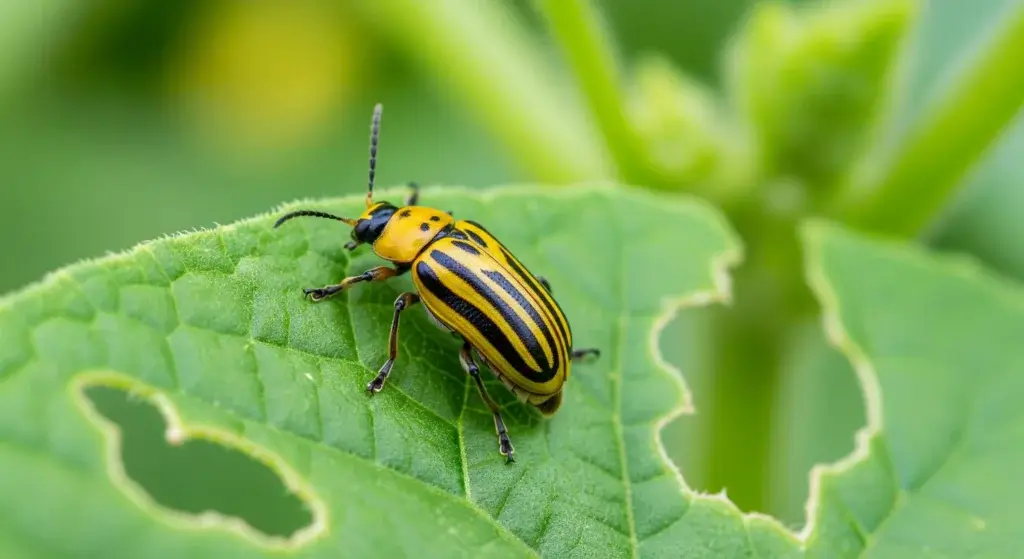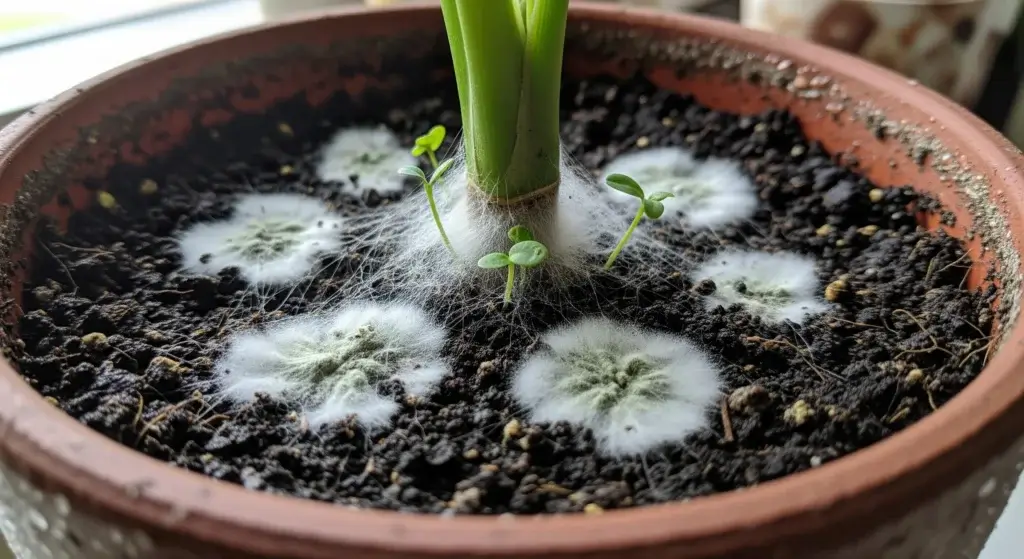
Cucumbers are a beloved addition to many gardens, offering fresh and crisp produce for a variety of dishes.
However, one of the significant threats to growing healthy cucumbers is bacterial wilt.
This devastating plant disease can quickly ruin your crop if not identified and managed properly.
In this comprehensive guide, we will explore what bacterial wilt is, its causes, identification, treatment, and prevention tips to help you keep your cucumber plants healthy and productive.
What is Bacterial Wilt?
Bacterial wilt is a plant disease caused by a bacterium called Erwinia tracheiphila.
It mostly affects cucumbers but can also infect other plants like melons, pumpkins, and squash.
The disease is named after the wilting of the plant’s leaves, which happens because the bacteria block the plant’s water-carrying vessels (xylem).
- Read also: Powdery Mildew on Cucumber Plants: Solutions and Prevention
- Read also: Cucumber Killers: Common Fungal Diseases of Cucumber
What Causes Bacterial Wilt?
Bacterial wilt in cucumbers is mainly caused by a bacterium called Erwinia tracheiphila.
This bacterium spreads from plant to plant through cucumber beetles, which act as carriers.
There are two main types of cucumber beetles involved:
- Striped cucumber beetle (Acalymma vittatum): These beetles are yellow with black stripes and are often seen in gardens.
- Spotted cucumber beetle (Diabrotica undecimpunctata howardi): These beetles are yellow-green with black spots.
When these beetles feed on cucumber plants, they transfer the Erwinia tracheiphila bacteria into the plant’s water-carrying vessels.
These vessels are like the plant’s plumbing system, moving water and nutrients throughout.
Once inside the plant, the bacteria multiply and block these vessels.
This blockage stops water and nutrients from reaching the leaves and stems properly.
As a result, the cucumber plant starts to wilt—its leaves become limp and it may eventually die.
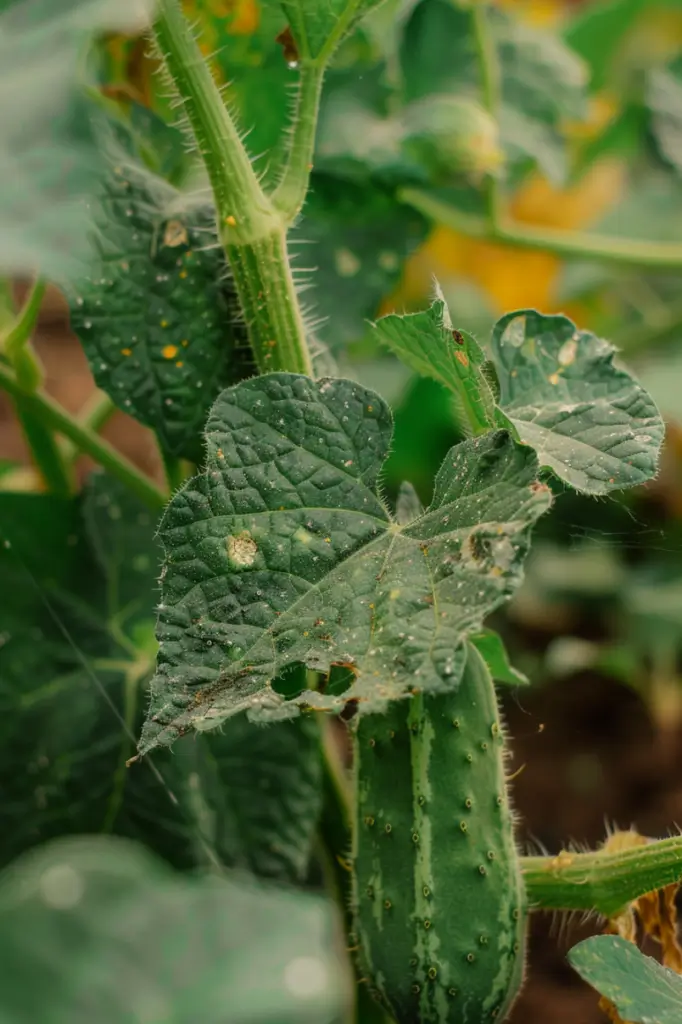
How to Identify Bacterial Wilt in Cucumbers?
Visual symptoms
Identifying bacterial wilt early is important to manage the disease effectively. Here are the main visual signs to watch for:
- Wilting leaves: The first noticeable symptom is wilting, starting with individual leaves. As the disease progresses, the entire plant may wilt and droop.
- Leaf discoloration: Leaves affected by bacterial wilt may turn yellow and then brown over time.
- Sticky substance: When you cut a wilted stem and press the cut ends together, you might see a sticky, milky substance oozing out.
- Plant collapse: In severe cases, the entire cucumber plant may collapse and die if the disease is not managed.
Differentiating from Other Issues
It’s important to differentiate bacterial wilt from other issues that cause similar symptoms, such as drought stress, nutrient deficiencies, or other diseases.
Here are a few tips:
- Check for cucumber beetles: Since they spread the bacteria, their presence is a strong indication that bacterial wilt might be the issue.
- Sticky substance test: The milky, sticky substance from the cut stem is unique to bacterial wilt. If you observe this substance, it confirms the presence of the bacteria.
- Consistent wilting: Unlike wilting from temporary lack of water, bacterial wilt causes persistent wilting that doesn’t improve with watering.
How to Treat Bacterial Wilt in Cucumbers?
Unfortunately, once bacterial wilt infects a cucumber plant, there is no cure.
However, early detection and management can help prevent the spread of the disease to healthy plants.
Here are some steps you can take:
Remove infected plants
- Act quickly: As soon as you notice symptoms of bacterial wilt, like wilting and yellowing leaves, remove the infected cucumber plant immediately.
- Dispose properly: Don’t compost infected plants. Instead, securely bag and dispose of them in the trash to avoid spreading the bacteria.
Control cucumber beetles
Use insecticides or organic methods to control cucumber beetles.
Consider using floating row covers to protect plants from beetles.
Clean garden tools
- Identify beetles: Since cucumber beetles spread the bacteria, controlling them is crucial.
- Use insecticides: Consider using insecticides labeled for cucumber beetle control. Follow the instructions carefully to ensure safe and effective use.
- Organic methods: If you prefer organic gardening, you can use natural repellents or beneficial insects that prey on cucumber beetles.
- Floating row covers: Covering your cucumber plants with floating row covers early in the season can prevent beetles from reaching them and spreading the bacteria.
Clean garden tools
- Disinfect tools: Regularly clean and disinfect your gardening tools, especially if you’ve been working around infected plants.
- Use bleach solution: Use a diluted bleach solution (1 part bleach to 9 parts water) to sanitize tools after each use. This helps kill any bacteria that might be on the tools.
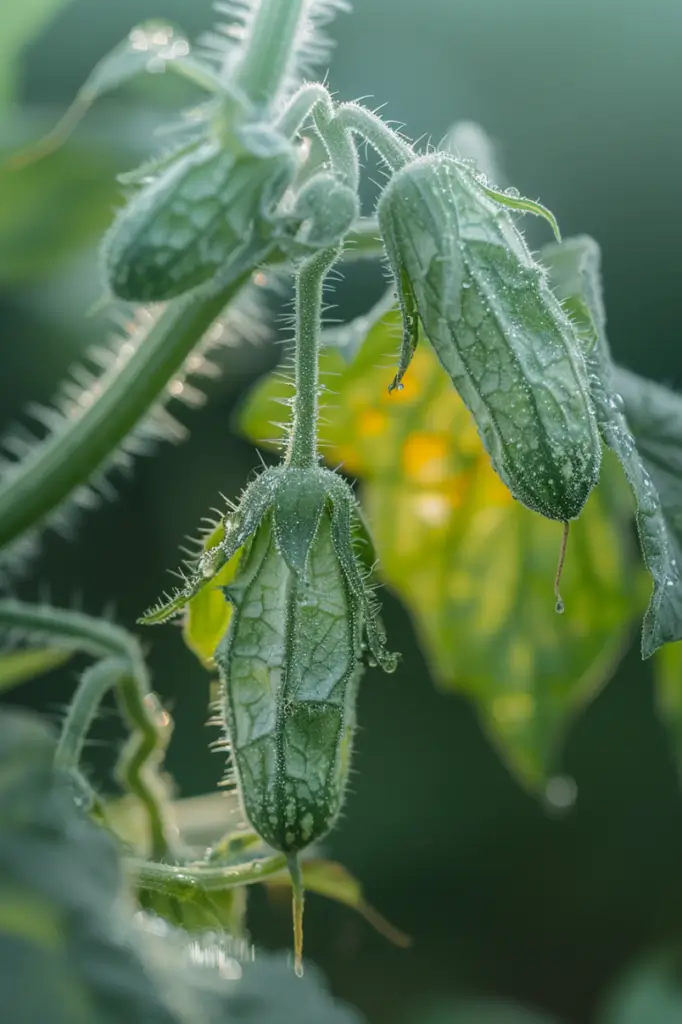
Tips for Preventing Bacterial Wilt in Cucumbers
Preventing bacterial wilt is the best way to protect your cucumber plants.
Here are some practical and straightforward tips to help you avoid this devastating disease:
Rotate crops
Rotating crops means planting cucumbers and other related plants (like melons and squash) in different areas of your garden each year.
This practice helps break the cycle of diseases and pests that might have built up in the soil.
- How to rotate: Plan your garden layout so that cucumbers aren’t planted in the same spot for at least three years. This reduces the chance of disease buildup.
- Benefits: Rotating crops not only prevents diseases like bacterial wilt but also helps keep the soil healthy by balancing nutrients and preventing erosion.
Use resistant varieties
Choosing cucumber varieties that are resistant or tolerant to bacterial wilt can significantly reduce the risk of infection.
- How to choose: Look for resistant varieties in seed catalogs or ask for recommendations at your local nursery. Popular resistant varieties include ‘County Fair’ and ‘Saladin’.
- Benefits: These varieties are bred to be less susceptible to bacterial wilt, giving you a better chance of a healthy crop.
Implement mulching
Mulching around your cucumber plants can help prevent bacterial wilt by reducing the habitat for cucumber beetles, the insects that spread the disease.
- How to mulch: Apply a 2-3 inch layer of organic mulch like straw, wood chips, or compost around the base of your plants. Keep the mulch a few inches away from the stems to prevent rot.
- Benefits: Mulch helps retain moisture, suppress weeds, and create a barrier that deters beetles. As it decomposes, mulch also enriches the soil.
Maintain plant health
Healthy plants are more resistant to diseases, including bacterial wilt. Proper care is essential for keeping your cucumber plants strong.
- Watering: Water your plants deeply at the base to ensure they get enough moisture, especially during flowering and fruiting.
- Nutrients: Use a balanced fertilizer to keep your plants well-nourished. A soil test can help you understand what nutrients your soil might be lacking.
- Pruning and spacing: Trim excess leaves to improve air circulation and space your plants properly to reduce humidity and disease risk.
Monitor regularly
Regularly checking your cucumber plants can help you catch problems early and take action before they spread.
- How to monitor: Inspect your plants at least twice a week. Look for signs of cucumber beetles and damage to leaves.
- Pest control: If you see beetles, use organic insecticides like neem oil or insecticidal soap. In severe cases, chemical insecticides may be necessary.
Additional prevention tips
- Keep your garden clean: Remove plant debris, weeds, and other materials that can harbor pests and diseases.
- Use barriers: Floating row covers can protect young plants from beetles. Remove them when plants start to flower to allow for pollination.
- Companion planting: Plant herbs and flowers like nasturtiums, marigolds, and radishes nearby to help repel cucumber beetles naturally.
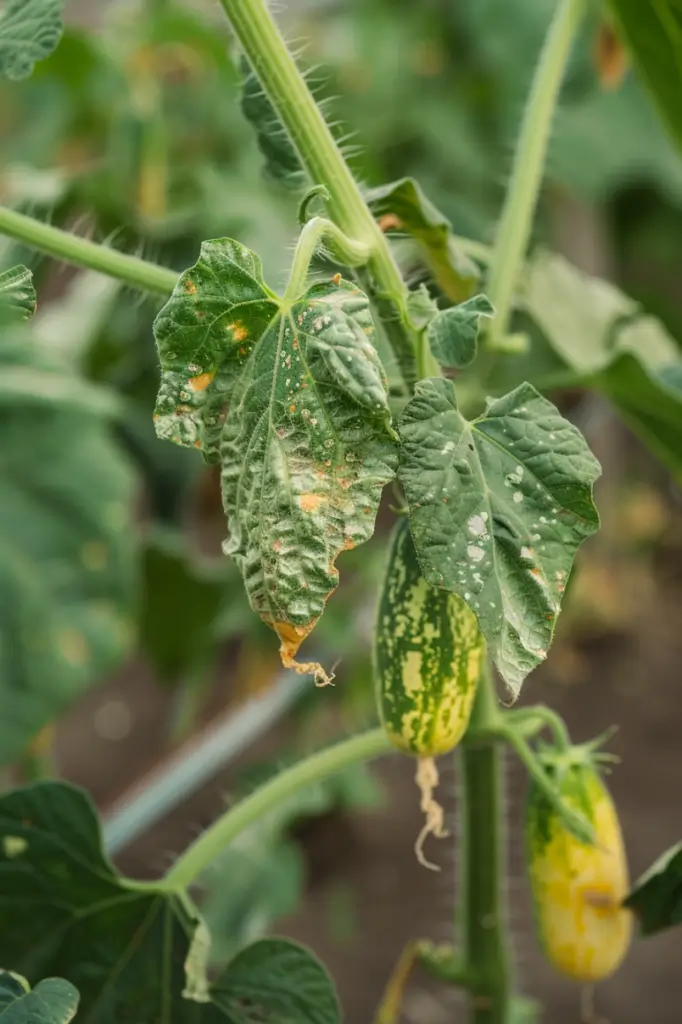
- Read also: A Complete Guide: Troubleshooting Common Cucumber Problems
- Read also: Building Upwards: A DIY Garden Trellis for Cucumbers Guide
Conclusion
Bacterial wilt of cucumbers is a challenging disease that can significantly impact your garden.
By understanding its causes, identifying symptoms early, and implementing effective prevention and management strategies, you can protect your cucumber plants and enjoy a healthy, productive harvest.
Stay vigilant and proactive to keep bacterial wilt at bay.
FAQs
The first signs include wilting leaves that don’t recover with watering and the presence of cucumber beetles. As the disease progresses, leaves may turn yellow and brown.
Use insecticides, floating row covers, and regular monitoring to control cucumber beetles. Removing weeds and debris that attract beetles can also help.
There is no cure for bacterial wilt once a plant is infected. The best approach is to remove and destroy infected plants to prevent the spread of the disease.
It’s best to rotate crops and avoid planting cucumbers or other cucurbit plants in the same location to reduce the risk of bacterial wilt reoccurring.
Yes, some cucumber varieties are resistant or tolerant to bacterial wilt. Check with local nurseries or seed catalogs for recommendations on resistant varieties.


